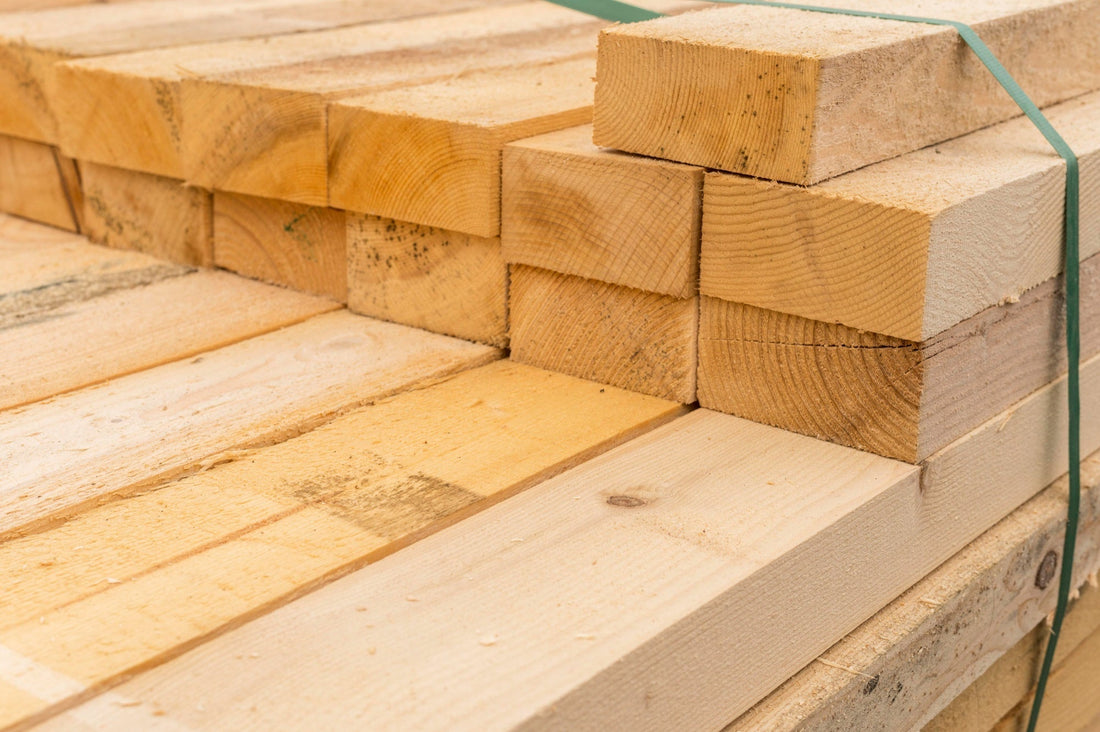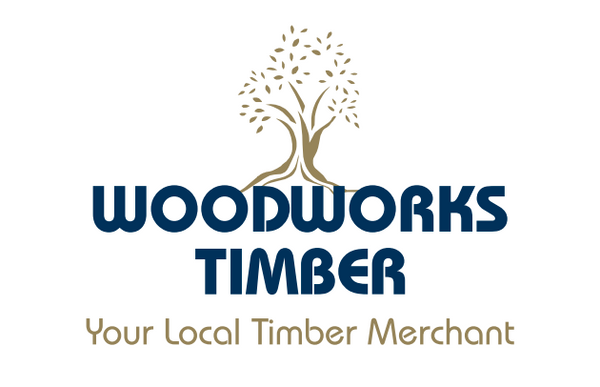
C24 vs C16 Timber: What’s the Difference and Which Should You Choose?
Share
Introduction
If you’ve ever wandered around a timber yard or scrolled through timber products online, you’ve probably seen two common markings stamped on the ends of structural timber: C16 and C24. At first glance, they look like just another bit of trade jargon. But if you’re about to build a deck, frame a loft conversion, or lay a floor, those letters and numbers matter more than you might think.
Picking between C24 vs C16 timber isn’t just about what’s cheapest. It’s about what’s safest, strongest, and most suitable for the job in hand. Get it right, and your project will be solid, safe, and long-lasting. Get it wrong, and you might find yourself dealing with sagging floors, warping decking, or worse, costly repairs.
At Woodworks Timber, we help DIYers and professionals make this choice every day. So let’s break it down, simply, clearly, and with some real-life scenarios that show when to use C16 and when C24 is the better bet.
What Do C16 and C24 Mean, Anyway?
The “C” in C16 and C24 stands for softwood strength class. The numbers? They tell you how strong the timber is in terms of bending and load-bearing.
-
C16 timber: A reliable, everyday grade that handles general construction tasks well.
-
C24 timber: A higher-grade, denser timber with fewer imperfections and more strength.
The difference comes down to how the timber is grown, cut, and graded.
C16 timber often comes from faster-growing UK or European softwoods, which can have more knots and variations. C24 timber usually comes from slower-growing climates like Scandinavia, meaning the wood is denser, tighter-grained, and stronger.
Both grades are safe for construction when used correctly. The key is knowing which one matches your project.
How Timber Gets Its Grade
Before it lands in your hands, timber is carefully checked through one of two grading processes:
-
Visually graded: A trained grader inspects each piece, looking at knots, grain slope, cracks, and other imperfections.
-
Machine graded: Timber is passed through machines that test stiffness and strength mechanically.
C24 timber is subject to stricter grading. That means fewer knots, straighter grain, and a more uniform quality. It also means it can handle higher loads and longer spans without sagging.
If you’re interested in the standards behind it, timber strength classes are defined by BS EN 338 and overseen in the UK by the British Standards Institution. But if you’re a DIYer, the takeaway is simple: C24 is stronger and higher quality than C16.
C16 Timber: The Everyday Workhorse
Think of the C16 as the reliable family car of the timber world. It may not be flashy, but it’ll get you where you need to go for most everyday jobs.
Key Features:
-
More knots and imperfections (which are fine within limits).
-
Slightly lower strength and stiffness.
-
Readily available across the UK.
-
Easier on the wallet.
Best Uses for C16:
-
Stud walls and partitions.
-
Short-span roof joists.
-
General framing.
-
Garden sheds, playhouses, and lighter outdoor structures.
Real-World Scenario:
Say you’re building stud walls in a loft conversion. The walls won’t be load-bearing, but they need to hold plasterboard securely. C16 is perfect here - strong enough for the job, cost-effective, and readily available.
Another common use is for smaller sheds. If you’re knocking up a tool store or bike shed, C16 will do the job well without stretching your budget.
C24 Timber: The Premium Performer
Now think of C24 as the upgraded 4x4. Stronger, tougher, and built to handle heavier loads and harsher conditions.
Key Features:
-
Greater load-bearing strength (24 N/mm² vs 16 N/mm²).
-
Straighter grain and fewer knots.
-
More resistant to twisting, splitting, or warping.
-
Often imported from slow-grown Scandinavian softwoods.
Best Uses for C24:
-
Decking frames where timber is exposed to weather.
-
Roof joists with long spans.
-
Flooring joists where stability is key.
-
Projects where failure would be costly or unsafe.
Real-World Scenario:
You’re building raised decking for summer barbecues. It’ll need to support family gatherings, heavy garden furniture, and years of rain. C24 is the smarter choice. It gives peace of mind that your frame won’t sag or twist after a few seasons.
Likewise, if you’re laying floor joists in a new extension, C24 ensures strength and stability, especially if spans are wide.
Side-by-Side: C24 vs C16
|
Feature |
C16 Timber |
C24 Timber |
|
Strength |
16 N/mm² |
24 N/mm² |
|
Appearance |
More knots |
Fewer knots, straighter grain |
|
Durability |
Good |
Higher resistance to warping |
|
Cost |
Lower |
Higher |
|
Best For |
Stud walls, small sheds, short spans |
Decking, long spans, flooring, exposed structures |
Cost Considerations: Spend Now or Later?
C16 is cheaper, no question. For projects that don’t demand maximum strength, it makes sense to save money. But sometimes “cheaper” today means “more expensive” tomorrow.
Imagine this:
-
You build a deck with C16. It looks great at first, but after a couple of winters, the joists warp and weaken. You spend money fixing or rebuilding.
-
If you’d chosen C24, you’d have paid more upfront but saved yourself the hassle and cost of repairs down the line.
It’s about balance. For non-critical jobs, C16 is fine. For structural or exposed projects, C24 often pays for itself.
Building Regulations & Safety
UK building regulations specify that structural timber must meet strength requirements for safety. Approved Documents from the government outline what’s acceptable. For anything structural - especially flooring or roofing, always check spans and loads against official guidance.
If in doubt, consult an engineer or refer to UK Building Regulations. The last thing you want is to cut corners on something as important as structural timber.
A Day in the Life: Choosing C16 or C24
Picture this:
It’s Saturday morning, and Dave, a keen DIYer, is at Woodworks Timber picking out wood for his new garden project. He’s torn: C16 is cheaper, but the guy at the counter mentions C24 might be better.
Dave explains he’s building raised decking. The staff member asks: “Will it be raised off the ground? Will it hold heavy furniture?” When Dave nods, the advice is clear: C24 is worth the investment.
Later, Dave uses leftover C16 timber for the frame of a small shed - perfect for the lighter load. The shed’s fine, and the decking? Solid, stable, and still going strong five summers later.
That’s the beauty of knowing the difference.
FAQs on C24 vs C16 Timber
Q1: Is C24 always better than C16?
Not always. C24 is stronger, but if the project doesn’t demand it, C16 is often the more cost-effective choice.
Q2: Can I use C16 for decking?
You can, but it’s not ideal. C24 is far more resistant to warping and better for long-term performance outdoors.
Q3: Why is C24 more expensive?
It’s higher quality, often imported, and subject to stricter grading. That makes it rarer and costlier.
Q4: How do I know what grade I need?
Check your building plans or ask your supplier. At Woodworks Timber, we help customers match grades to projects.
Q5: Do building inspectors check timber grade?
Yes. For structural elements like joists or roof timbers, inspectors will expect to see correct grades in line with regulations.
Conclusion
The choice between C24 vs C16 timber boils down to one question: what’s the job?
-
C16 timber: Reliable, affordable, and perfect for stud walls, partitions, sheds, and lighter projects.
-
C24 timber: Stronger, straighter, and built for decking, flooring, roofing, and anywhere safety or long spans matter.
At Woodworks Timber, we stock both and can guide you towards the right choice. Whether you’re a DIYer building your first deck or a contractor fitting out a new extension, we’ve got the timber you need - and the advice to back it up.
Ready to get started? Explore our C16 and C24 timber ranges at Woodworks Timber or contact us for expert guidance.
